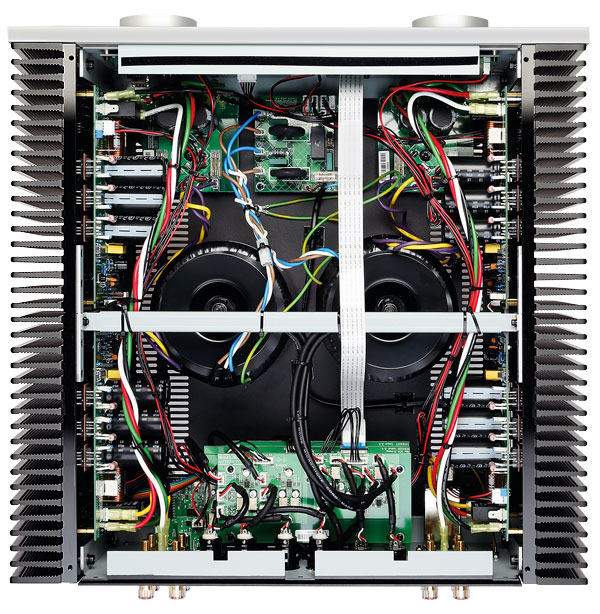Musical Fidelity M8xi Integrated Amp/DAC Page 2
Fortunately this is no one-trick pony. Sure, the M8xi sounds 'big', boasting tremendous weight, extension and a pneumatic grip over bass notes that powers the deepest rhythms through your rib cage and beyond, but its repertoire is both more varied and extensive in its resolution of colour, timbre, dynamics and ambience.
 Pedal To The Metal
Pedal To The Metal
Most striking is this amplifier's speed as transient details fly from the speakers with a fleetness that you'd perhaps not anticipate from a great lump of an amplifier. The M8xi isn't just heavy, it's also fast... This combination of weight, scale and zip is beautifully illustrated by the truly massive orchestra that powers the drama of Wagner's Symphonic Ring [Duisburg Philharmonic/Darlington; Acousence ACO21309, 192kHz/24-bit]. Recorded with Neumann mics, Apogee converters and a Merging Pyramix workstation, this fabulously detailed rendering finds harps and flutes still tonally vivid in a sea of strings stirred by no fewer than 30 first and second violins.
Multiple tympani and percussion underpin this ambitious festival of sound and through it all the M8xi keeps its cool, resolving the lyrical simplicity and delicacy of 'Forest Murmurs' with the same deft touch that it develops the scene of deep, fast-flowing water in the Das Rheingold Prelude. I have heard this soundscape sound grander still, but only with the likes of D'Agostino's Relentless monoblocks, masterworks in their own right [HFN Mar '20], but from an integrated? Never.
The M8xi is versatile too. As Diana Krall sashays her way through The Eagle's 'I Can't Tell You Why' [Wallflower; Universal/Verve 4701861, 48kHz/24-bit] the M8xi sheds its bulk and gets into the swing of things, lifting this vaguely melancholic ballad by illuminating both the brushwork percussion and accompanying piano.

This album had a very mixed reception from the critics on its release in 2015, not least because there's little sign of the fireworks Krall has brought to bear on some of her previous outings. But here the depth of detail, and seemingly natural composure of the performers in what is a very relaxed acoustic ensured the album was rarely less than captivating if not especially invigorating. Faithful to the tone of the message, perhaps, but not ideal listening for the times...
The USB Option
Nevertheless this was one of many albums I used to compare the sound of the M8xi through its analogue XLR and digital USB inputs, via a Melco N1ZS20/2 server [HFN Jun '17] and dCS Vivaldi One player/DAC [HFN Feb '18]. Simply put, the M8xi's USB input is good, very good, but an external high-end DAC will still have the edge, revealing the M8xi, in purely analogue guise, to be capable of a slightly more insightful sound with deeper, darker backgrounds and a subtlety that belies its brutish, no-nonsense apparel.
So the brush-like percussion from Carman Lundy's Self Portrait [JVC Victor VICJ-5152; ripped from K2 CD] is not a million miles off that from Krall's album, but in both cases the analogue input saw the M8xi paint performances that were just that bit smoother, more liquid in tone and delivery. Free of stress, strain or any suggestion of subliminal background hash, the sound was both inviting and enveloping, spilling from the speakers and washing away minutes and then hours of my listening time. Not that I was complaining.
Hi-Fi News Verdict
If you're of the persuasion that no amount of power is ever enough, or perhaps simply want to future-proof yourself against the unlikely purchase of impossibly insensitive speakers, then Musical Fidelity's M8xi is your man. But this integrated amp, bluff exterior and all, is not only capable of driving a short piece of damp string, but does so with a dexterity and fleetness of foot that utterly belies its bulk. Chalk one up to Austria.


























































